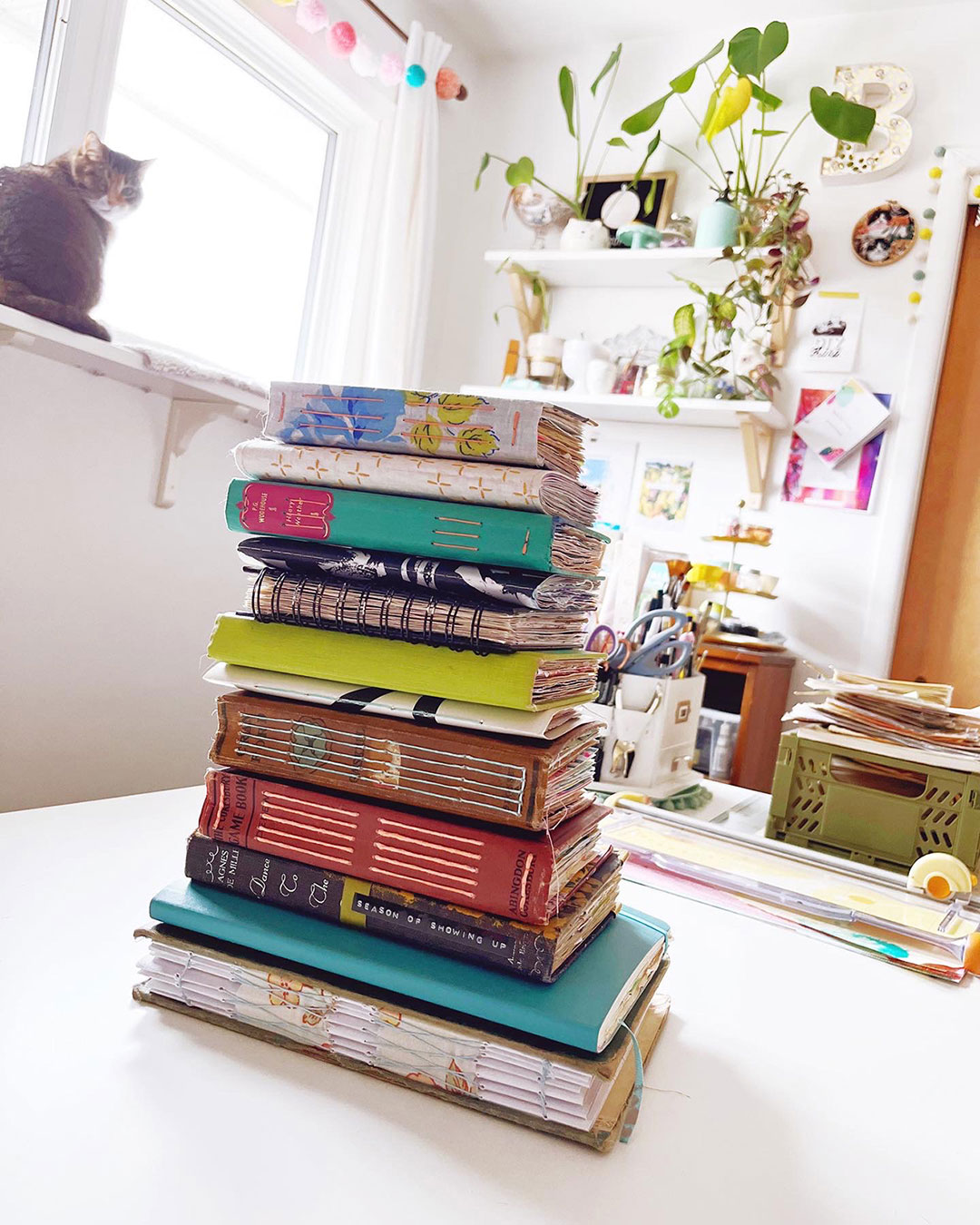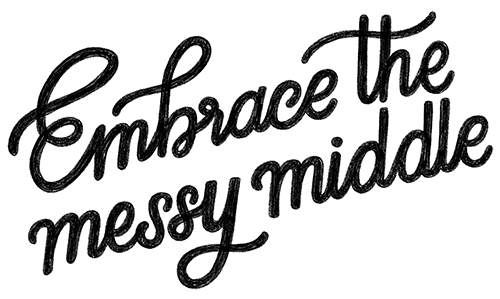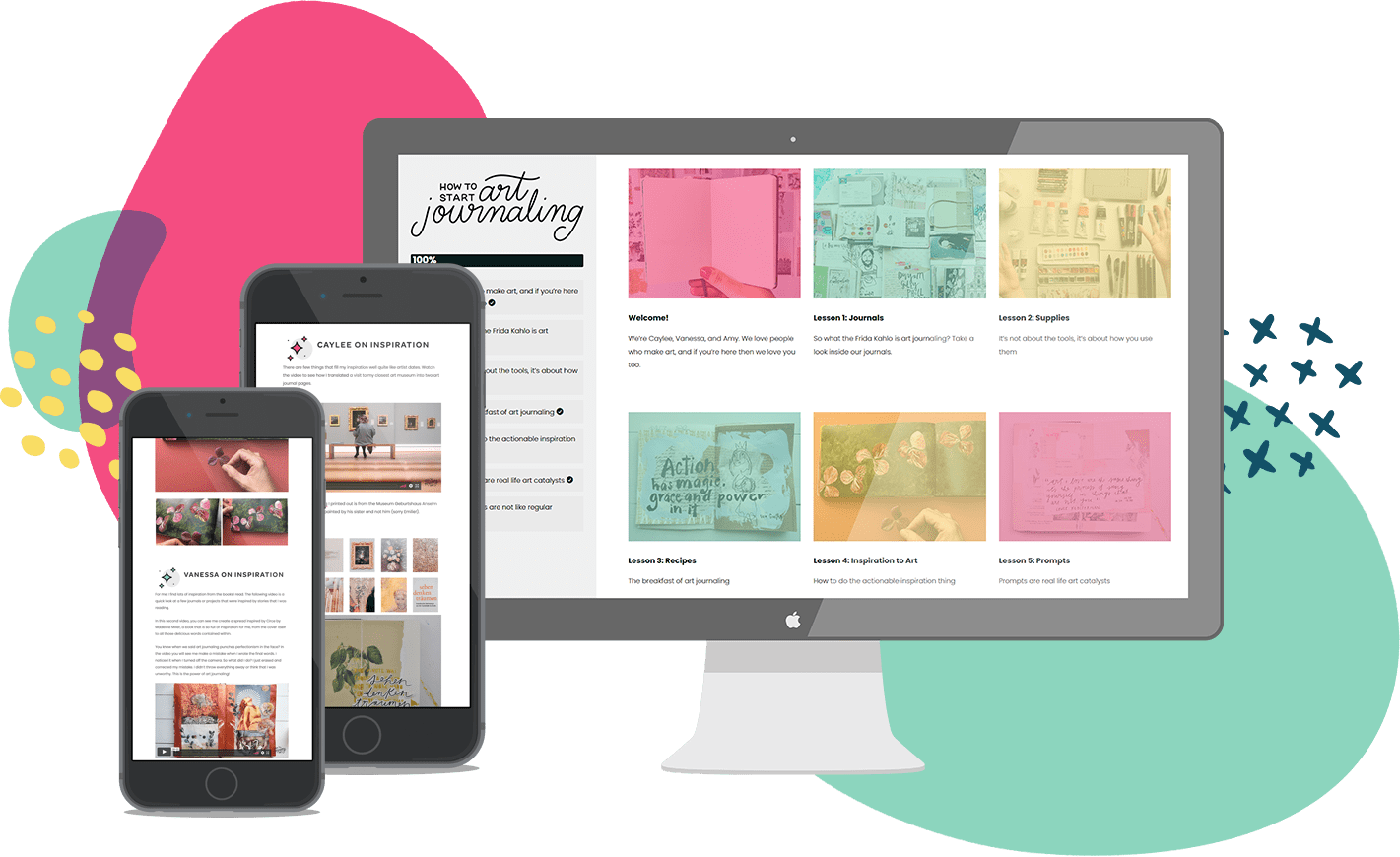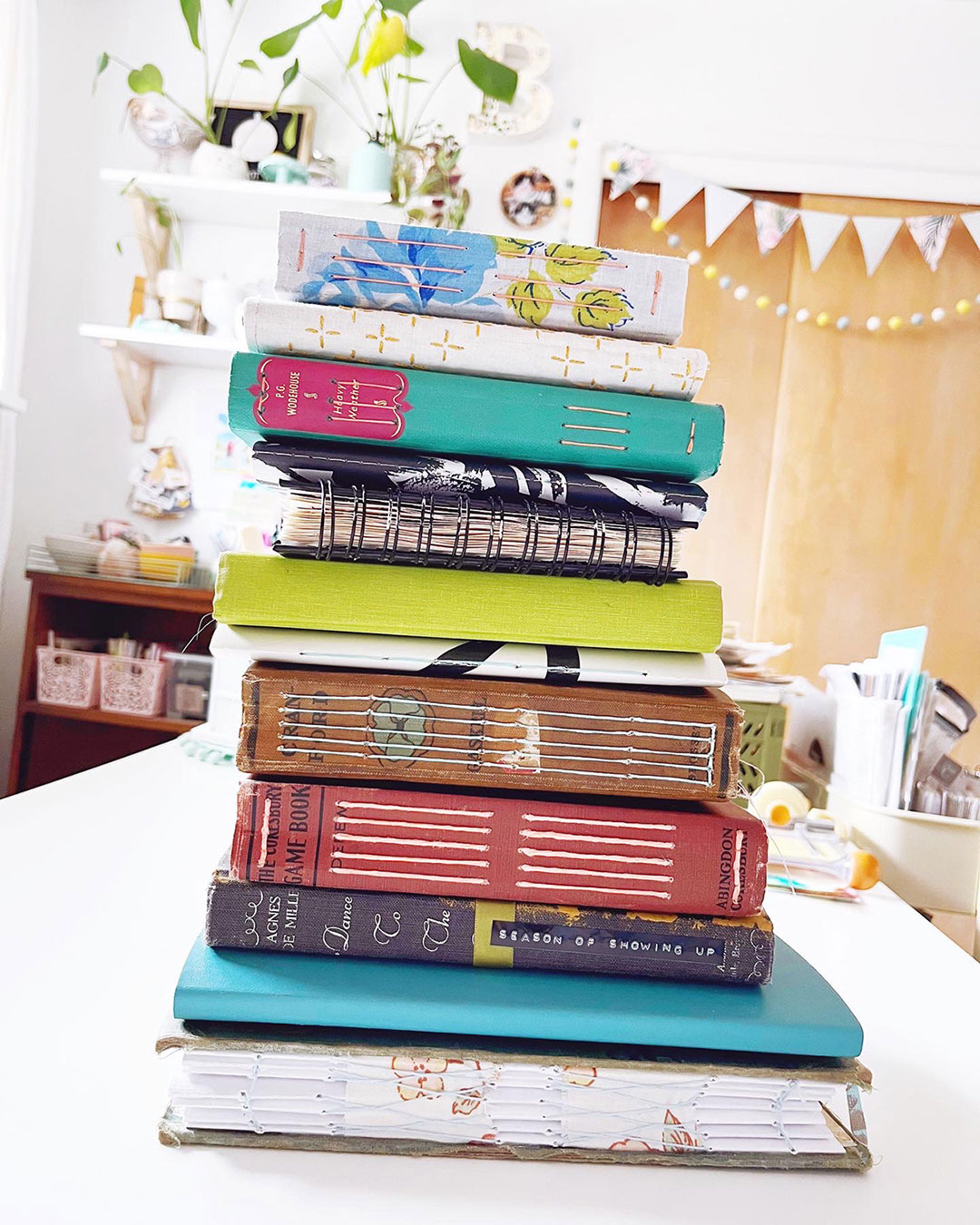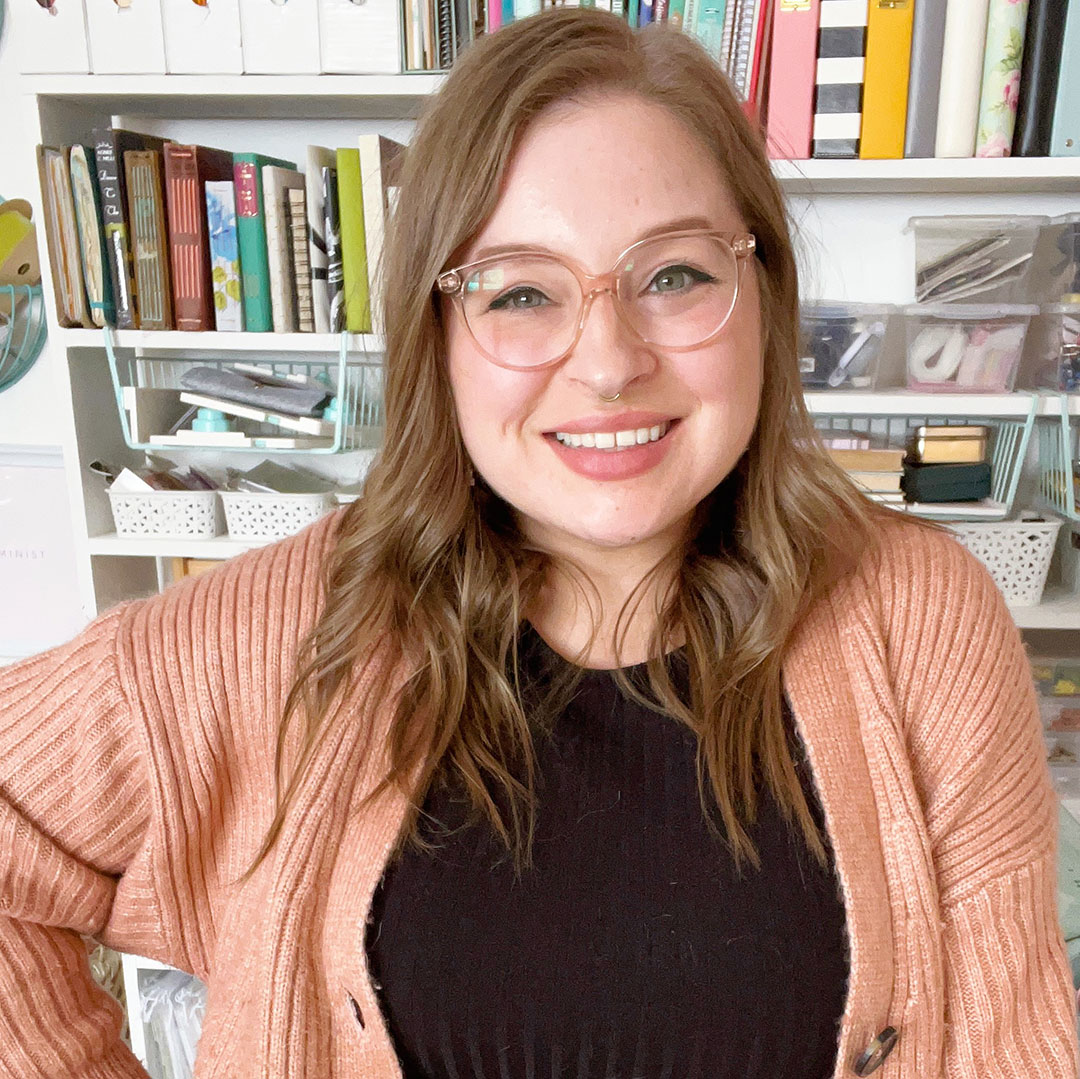Every month at Get Messy, we start a new season. Get Messy Seasons are a focused exploration of creating according to a theme. Filled with tutorials, prompts, and catalysts for you to learn and love. In the same way that we go through seasons of our life, we also go through seasons in our creative practice. It’s good to evaluate, see what you need, and then give it to yourself.
One of our Get Messy members, Brooke Gorrell-Beaudoin, set herself the challenge of creating an altered book for each season of Get Messy, and she’s here to share her tips. Whether you’re part of the Get Messy community or not, you can apply her lessons to your own seasons of art-making.
PS: want to learn more about Brooke? Take a peek into her art and process in our interview with her.
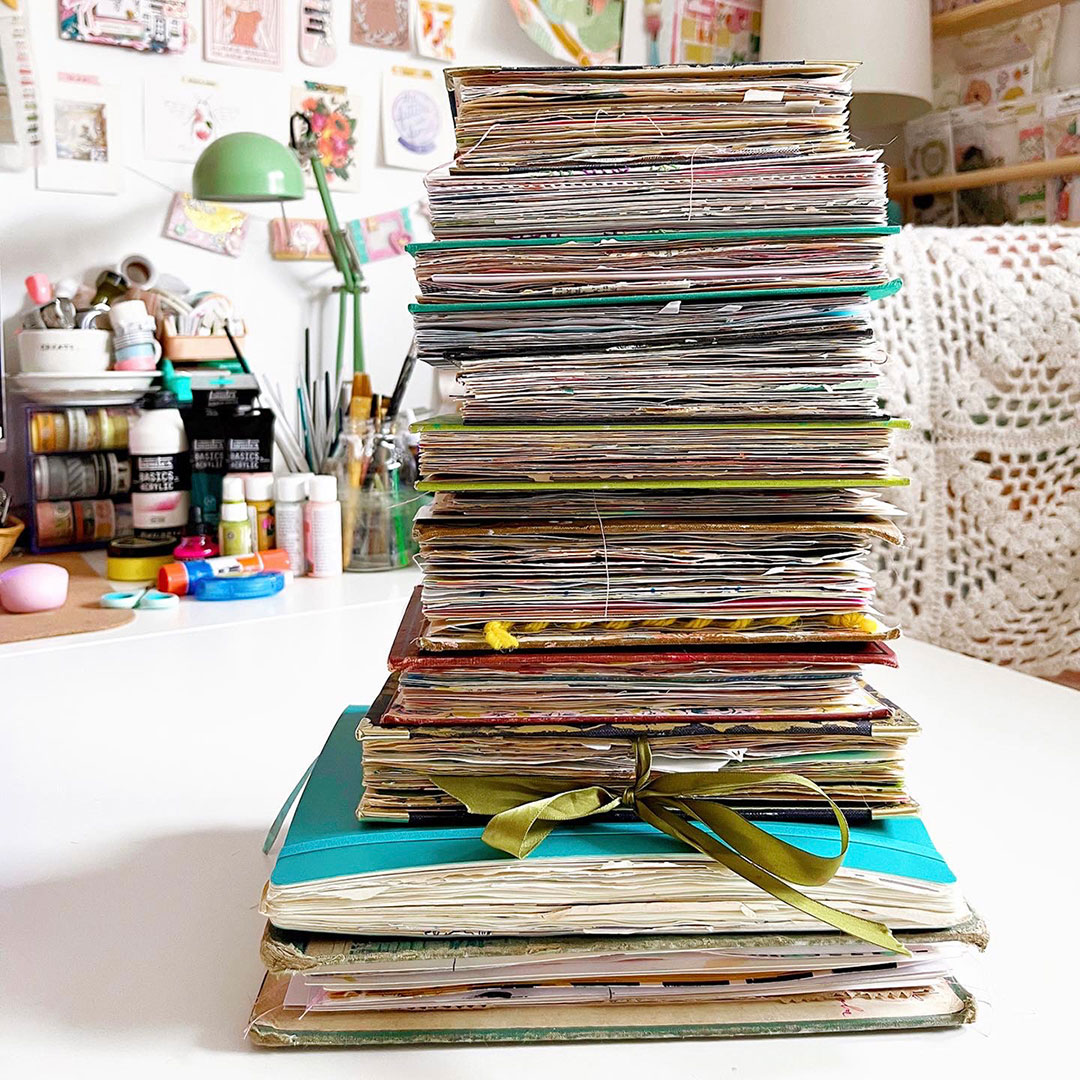
Hi. I am Brooke and on social media, I go as mintgreenthumb. Caylee asked me to make this video a while ago and I’ve been working on it because I’ve really been thinking about how I wanted to approach it. So, the video is supposed to be about how I approach a season in Get Messy and how I make it my own. I get a lot of questions on Instagram in my DMs regarding this subject. So, I’m really excited to be able to share it in this way so that you have a resource that you can go back to.
My art journaling story
First, I guess I’ll start talking about when I started art journaling. I’ve been art journaling since I was a teenager, but last year I committed to Get Messy in April and I did a full year of art journals. I made a journal a month. At first, it felt a little daunting for sure. I was a little bit intimidated, but it got a lot easier as I went.
Introducing the season
The first thing I want to talk about is the introduction to the season. The way it’s set up is usually the first week of the month is a catch-up replenishment week from the month before. So, you usually have a few buffer days in between to finish up your previous month’s journal and move on to the next month, like the next season that you are going to work on.
You also don’t have to do that. You can just continue the same journal and just section it off or whatever you want to do, but I personally like to have a journal for each season and that’s what’s working for me at this time in my life. I know that might not always be sustainable because that’s a lot of journals, but in this season of my life, it’s working for me. There is a calendar for the seasons (members can view it here). You can see what’s coming up and when it starts and whatnot so you can plan. When they introduce the season, the first thing I do is I just think about the word. So, for instance, right now, the Season of Heart just started. So, immediately, I said, “Oh okay. Season of Heart. What does that mean to me? What do I want to do with this?”
And of course, that’s a personal thing. That’ll be subjective, but I think about it and then I look at the blurb that Caylee will put on the website about it and what she is thinking for the season and I take that as my guide, and then from there I start to pick my journal. So, when I’m picking a journal or a notebook or whatever that I’m going to be using, whether I’m making it myself or whether I’m using one that’s already done, I think about how much time I’m going to have that month. So, we look ahead in my calendar and see what I’ll be up to and how prolific I’ll be able to be that month because I know if I have other things going on that it might not necessarily be conducive to a lot of art journaling. So, I would make a smaller journal for instance, and I’ll show you in a little bit what these journals look like and I’ll give some examples, but yeah, that’s how I go on size. I’m binding my own journal and I’m making my own. That’s what dictates how many pages I include.
Making a journal to house a season
So, for instance, Messy May. I knew it was going to be a really cool busy month with all the prompts. So, I wanted to make a bigger journal and I wanted to make sure that I had quite a few pages that I could work with, and that worked out really well because I knew in May, I was going to be dedicating a lot of time to that.
In December, however… I do a December daily project documenting our daily memories in the holiday season. So, during that month, I knew that I was going to be busy working on this other project every day. So, I made a smaller journal. I made fewer pages. It was more like a pamphlet-stitched traveler’s notebook kind of deal and it worked out really well.
So, I didn’t feel intimidated to fill up that whole journal nor did… I didn’t feel pressure to just make and make and make so that I didn’t have an empty journal at the end even though that’s totally okay and that happens, I have some journals that have half the pages empty and that’s okay.
Some months are different and that is one of my biggest tips is don’t make it hard. It’s easy. It should be fun. It should be something that you enjoy and that you used to grow.
What to do if you fall off track
Don’t beat yourself up if you miss a prompt, if you miss a month, if you need to take a break.
Sometimes your creative well runs a little bit dry and that’s okay.
We all go through these seasons and that’s a theme here in Get Messy that we go through seasons and that each one is different and good in its own way.
Exploring what the season means to you
So, that would be my tip for which journal to choose and how many pages, et cetera, and then my next step that I do would be to write out what it means to me.
So, write out what the Season of Heart would mean to me and what I want to get out of it. Usually, those pages that I write it out on, I’ll rip up and use as backgrounds in my journals. Not always, but usually, and that’s a really good way to just get out your thoughts about it and your feelings, things you want to work on that month, things you want to explore within yourself, and that’s a little bit of a way of accountability and planning of what you want to get out of it rather than just blindly approaching it and hoping for the best in a way.
I would say nine times out of 10, I do that. I ride it out and everything. Every season’s different, right? Some seasons, I just get right into it and I forget to do that and that’s okay, but yeah, so that’s how I start, and then from there, I just follow the prompts.
Following prompts
So, when I first started, my first month, there was a daily prompt and that was actually a really good way to get into it and get in the practice of art journaling every day, but a typical season has two guest artists that do a prompt and it’s a bit of a more in-depth prompt that way.
Following guest artists
Every two weeks, I sit down and have a real art journaling session where I follow that prompt and get inspiration from it and learn new techniques and then I apply what I’ve learned to my journal that month.
So, that’s another way to explore your creativity and to learn new things … and that’s the whole point of art journaling, right? To explore these techniques and try them out in your journal to make your art better and different and to improve it .
I would say the hardest part of staying consistent with art journaling and being prolific with it is to just do it.
The only time that I don’t art journal or that I don’t make stuff is when I’m overthinking it and when I’m like, oh, I don’t deserve the time that it takes to do that and like I get into my head, right? So, the only time that I don’t really art journal is when I choose not to, and of course, that’s a choice and there are other things going on, but the biggest tip is to just start.
It’s not an all-or-nothing situation. It’s not, “Oh, I didn’t art journal yesterday, so I should just write off the whole month,” right? We don’t want to get into that mindset.
Redefining how to create every day
Each day is a new day and my goal every day is to create at least something at my desk in my studio whether that be taking out a bottle of paint and a paintbrush and just doing a couple of swipes across a page. Whether that’s doing a full jelly plate session, not usually. Even if that is just gluing a couple of pieces of collage paper onto a page.
Get into the habit of doing something creative with your hands every day, and it will become a habit. It will become something that is part of your daily routine. It is also helpful to have a space where you art journal, whether it be a corner in your bedroom, whether it be a desk, whether it be the kitchen table, whether you have a room in your house where you have a room for art. It’s nice to have a little space dedicated so you don’t feel obligated to clean it all up at the end and that can be daunting as well.
Set yourself up for success, make a little home for your art journaling practice for the majority of the time, and it’ll feel a bit more comfortable and won’t feel as daunting.
Journaling for the seasons
I wanted to show you some of my journals and my reasoning behind choosing each one.
Season of Promise
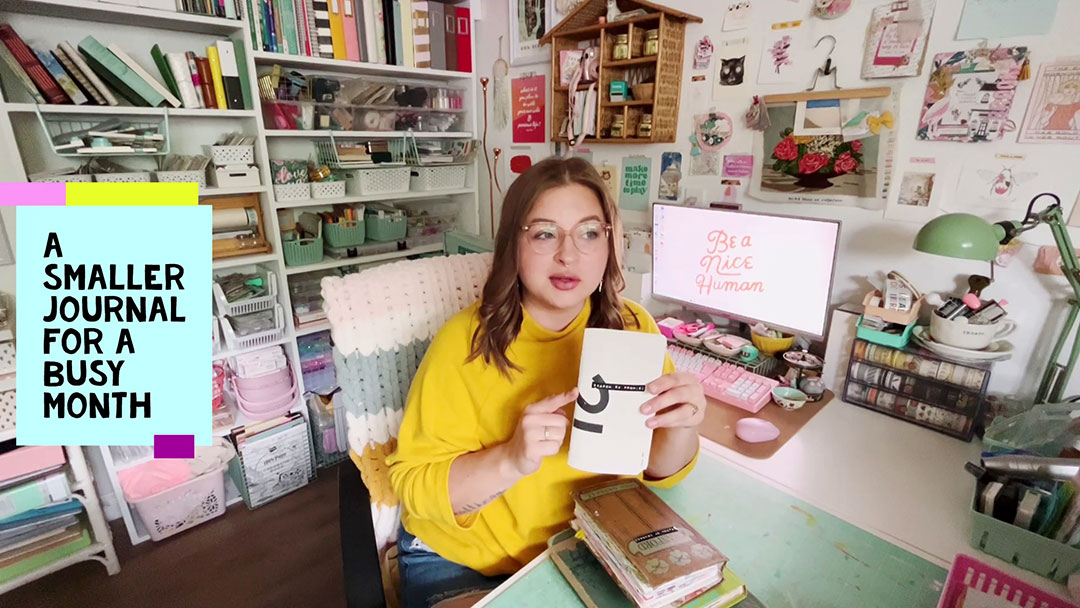
This one was my Season of Promise. So, as I mentioned before, my December album, one that I was… I knew I was going to be busy that month, and I knew I wouldn’t have a ton of time for art journaling, so I made just a little pamphlet one. It’s a little bit less big, a little bit less pages and it’s less technique-heavy and more collage-heavy, so less time-consuming stuff, but it doesn’t make it any less impressive than my other journals to me. It just makes me think of that season and all the other things I was doing and I don’t look at it as a negative if I’m going to have a smaller journal. So, that would be an example of a smaller one.
Season of Courage
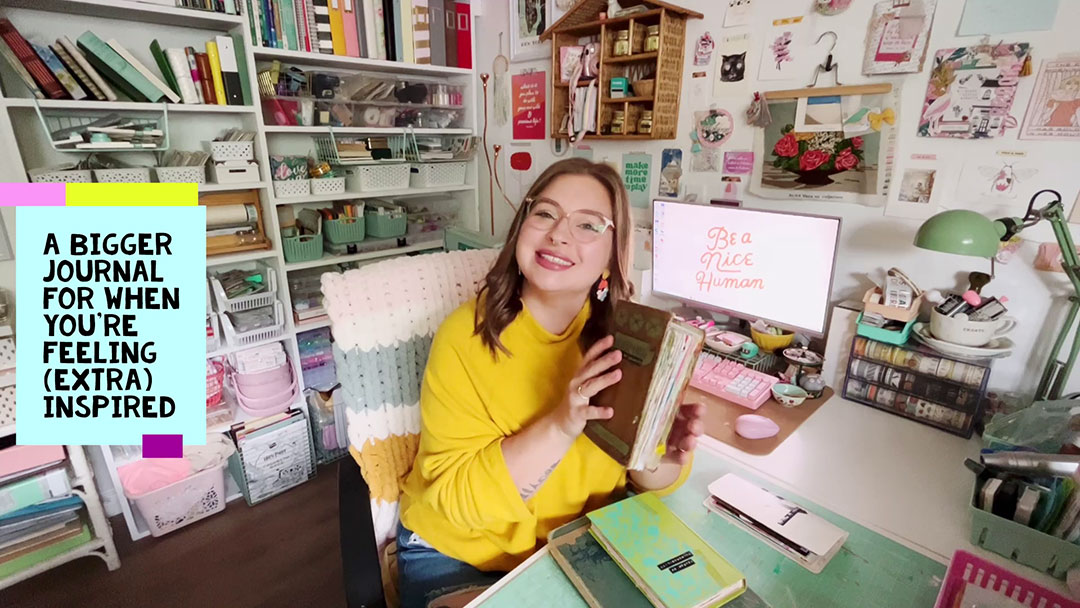
This would be one that I made it big to accommodate all the art, but it still got out of hand. So, this one was from January when we did the Season of Courage.
I was coming off of that month of doing less art journaling, so I knew I was going to want a big, heavy month of prolific art journaling. So, I made a bigger book and I knew I was going to have a partner as well. So, I knew I needed more room to accommodate that in addition to my regular art journaling. So, when I was binding it, I made sure I had plenty of pages because I knew I was going to have a lot of ideas and some of it is pretty technique heavy and some of it is just collage like that and it all just completes one big chunky book.
Season of Vulnerability

So, then I would consider this an average month. My typical month, this is what my journal would be. Not too thick, pretty approachable, and not too small either. I wanted some room. So, this one had quite a few technique-heavy sheets, but there was also just collage and that kind of thing. So, this would be what my typical month’s journal would look like, about this many pages, not a ton, on a regular month.
Season of Heritage
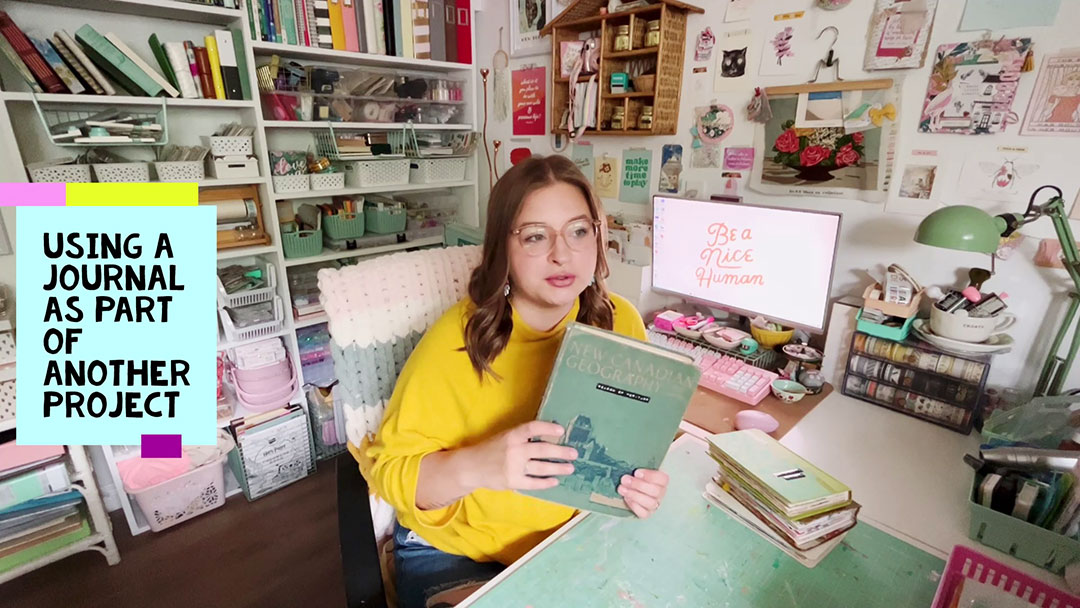
Then this one is an anomaly for me, the Season of Heritage. I knew that I wanted an art journal on that subject anyway. So, I wanted to make that month, like the seasonal journal, bigger to accommodate that in the future. So, for this one, I used a textbook cover, and then I did fancy-schmancy binding on the pages, but in this one, you can see that I didn’t create as much. There are lots of blank pages. There’s lots of room for other stuff and that was my plan. So, I made it a big journal. I think I added too many signatures inside, so it’s a little bit too snug in there, but whatever you live and you learn, but yeah. So, that would be an example of approaching the season in a broader way and including it in a different project.
So, those are a couple of examples of journals that I’ve made and a little overview of my process of how I choose, but honestly, whatever type of journal you use doesn’t matter.
I know that’s pretty controversial around here. It’s nice to hand bind vintage book covers and make watercolor paper books and whatnot, but you do not have to start there. Don’t feel left out because your journals don’t look fancy and vintage and whatever. That’s just icing on top.
What matters is that you have pages in a book that will be a home for you exploring your art practice.
Don’t get hung up on the comparison game on social media. It can be tough. So, when I first started art journaling, I thought that every journal had to be amazing and every one had to be beautiful. They all had to have beautiful bindings and whatnot, but then I started exploring using just a regular notebook, using a spiral-bound book, a sketchbook, whatnot, and that has also been a really fun thing to explore and to learn that way by trial and error what journal works best for me and what I need in each season.
Focus less on the journal and more about journaling
So, focus less on the actual journal and more about what you’re putting on the pages and that you’re actually art journaling, okay? Some months are busy or some months like the previous month had a lot more going on. So, sometimes in that case, I’ll do a simpler journal, so I won’t take the time to bind a full journal for myself. I’ll just use a notebook that I have and make that work and that’s okay too.
That’s the whole point of having a season.
It refreshes monthly and it is refreshing. It’s so nice and it’s fun to start a new journal every month and it is very satisfying to have a whole staff of journals from a year of our journaling.
Remember that the most important part is consistency and that doing a tiny little bit every day will result in one big impressive project.
I hope this advice has helped. I am very grateful to Caylee for asking me to share my process, and if you have any questions, please let me know. You can DM me on Instagram and I’ll try my best to answer any questions you have.
